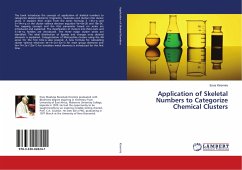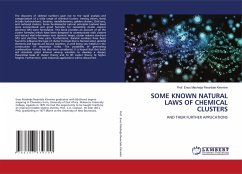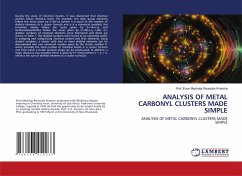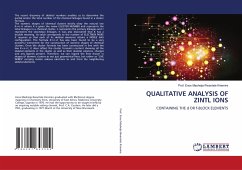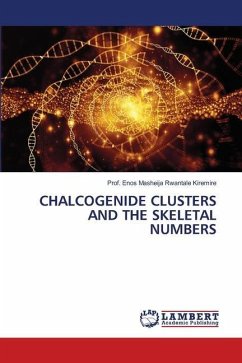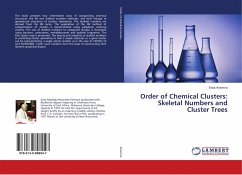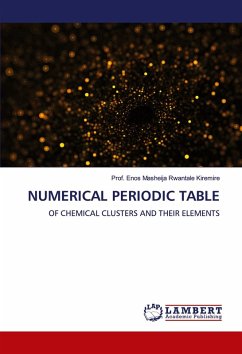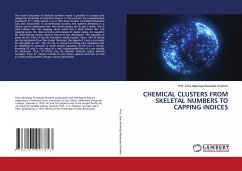
CHEMICAL CLUSTERS FROM SKELETAL NUMBERS TO CAPPING INDICES
Versandkostenfrei!
Versandfertig in 6-10 Tagen
56,99 €
inkl. MwSt.

PAYBACK Punkte
28 °P sammeln!
The recent discovery of skeletal numbers made it possible to analyze and categorize hundreds of chemical clusters. In the process, the categorization parameter K_= DzCy where z+y=n (the total number of skeletal elements) was also discovered. In conventional clusters, the skeletal elements in a cluster can be distributed into two shells namely the D and C shells. The D shell follows the 14n capping series while the C shell follows the 12n capping series. On close scrutiny and analysis of cluster series, an equation for determining cluster valence electrons was developed. The equation is given b...
The recent discovery of skeletal numbers made it possible to analyze and categorize hundreds of chemical clusters. In the process, the categorization parameter K_= DzCy where z+y=n (the total number of skeletal elements) was also discovered. In conventional clusters, the skeletal elements in a cluster can be distributed into two shells namely the D and C shells. The D shell follows the 14n capping series while the C shell follows the 12n capping series. On close scrutiny and analysis of cluster series, an equation for determining cluster valence electrons was developed. The equation is given by VE=14z+2+12y for transition metal clusters. Since, VE=VF which can be calculated from the cluster formulas, the values of z and y can easily be calculated as VF= 14z+2+12y. In actual fact these two equations can be simplified to generate a much simpler equation VF-12n=2z+2. Hence, knowing VF, and n, the value of z and subsequently that of y can readily be obtained. Thus, K_=DzCy can be derived without using skeletal numbers. From K_, cluster number K and cluster valence electrons as well as constructing isomeric shapes can be generated.





